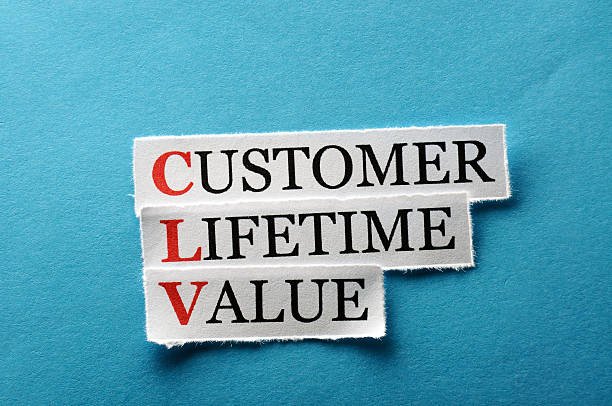As a business owner, you need to understand your customers and their needs.Tracking how well your services or products work out with your customers and modifying them as per the demands will elongate the life of your business.
Tracking sales revenue, profit margin and customer retention are just some of the metrics that help you stay on track, as your business expands. If you end up not tracking any of the essential business metrics, you might not be able to predict unexpected challenges in your business journey.
One of the most important metrics that business owners track is customer lifetime value (CLV). This metric will give you a preview of what your relationship with an average customer will look like during your business lifecycle.
Most successful organisations track CLV and banks on it to help expand their business. A chief business officer is responsible for analysing the business metrics and developing strategies that align with market trends. In this guide, we will talk about the importance of CLV in businesses.
What is the customer lifetime value (CLV)?
Customer lifetime value (CLV) is a metric that indicates the total revenue a business can expect from a customer account throughout the business relationship. It considers the revenue value of the customer and compares it to the business’s predicated customer lifespan.
The higher the CLV of a customer, the more valuable the buyer is to your business. This metric helps in gauging the current customer loyalty. If a customer continues to purchase your product or service, it’s a good sign that your marketing strategies are working.
Customer lifetime value models
There are two models using which businesses can choose to measure customer lifetime value. These models are:
-
Historic customer lifetime value
As the name suggests, this model uses previous purchase data to predict the value of a customer. It does not consider if the existing customer will continue with the organisation or not.
In the historic model, the value of your customer is determined by the average order value. This model is especially useful if most of the customers are only interacting with your company over a certain period.
However, most customer journeys are not the same. This model has some limitations.
Active customers, considered valuable according to the historic model, can become inactive and alter your data. On the contrary, inactive customers who start purchasing from you again might get overlooked as they are deemed ‘inactive’.
-
Predictive customer lifetime value
This CLV model forecasts the purchase behaviour of new and existing customers using machine learning or regression.
The predictive customer lifetime value model will help you identify your most valued customers and the services or products that bring you the most sales. With this prediction, you can also strategise your business to increase customer retention in the long run.
It is the responsibility of a chief business officer to choose the appropriate CLV model for a business.

What are the benefits of the customer lifetime value metric?
CLV helps business owners make informed decisions to expand their business. This metric helps in understanding whether your customer retention strategies, marketing programmes or even the quality of your product/service is up to the mark. It also gives direction, based on your customer retention, which direction the business can expand for better growth.
By understanding the CLV of your business, you get answers to some important business questions.
- Which products drive the highest profitability.
- The amount an average customer is expected to spend.
- How much is available to spend on new customer acquisition, which still keeping the business profitable.
- Which is your most profitable client domain.
- What kind of products high-end customers are looking for.
Finding the answer to these questions through CLV, will give you a much better understanding of your business performance. You can work on the areas which need improvement, which will increase client retention and drive in more revenue. Another benefit of understanding CLV is the customer acquisition cost (CAC) can significantly reduce with time.
Calculating CLV
There are two ways by which you can calculate the CLV of your business. These two ways are:
Accumulated data
If the historical sales data of your business is available, this way is far more accurate. All orders by individual customers are put together to get their own real CLVs.
For instance, your business has been operating for some time, but you only now decided to start monitoring your CLV, then you can use ecommerce analytics tools to find the historical data from day one.
The formula used is:
CLV = Purchase 1 + Purchase 2 + …. + Purchase n (here n is the number of purchases made by a customer)
Average estimate
If the granular data of the purchases made is not available, you can estimate an average using the formula:
CLV = AOV x n
It considers the average order value (AOV) and the average order number you get from every client. This method is mostly used for businesses that are just launching to give a market estimate.
Churn rate
Another metric which is often calculated is customer churn. It is the rate at which a customer stops doing business with your business.
Churn rate is calculated using the formulas: (Lost customers / total number of customers at the beginning of the period) / 100
Ways to improve customer lifetime value
Businesses are always looking for ways to enhance their customer experience and boost customer retention. Here are some tried and tested ways to improve the CLV of your business.
- Connect and interview with your best customers to understand why they continue to choose your business. With this information, you can develop marketing strategies to strengthen these aspects.
- Make returning items convenient for customers. If this process is complicated or expensive, it will lower the odds of them making another purchase from your brand.
- Ensure you provide exceptions for your loyal customers to increase customer retention. For instance, if a customer is cancelling a subscription, offer them a small discount to give them the option of remaining a user.
- Reward your loyal customers by offering them discounts or freebies with their purchases.
- Provide freebies along with large orders. This will encourage the new and existing customers to keep engaging with your business.
- Set the right delivery date. Providing a delivery date of 15th March and delivering it on the 13th, is much better than the other way round.
- Keep in touch with your long-time customers. Loyal customers want to know that you haven’t forgotten about them. Also, make it easy for them to contact you.
Conclusion
With CLV, you can shape your business strategies to ultimately build more successful, profitable businesses. It allows you to attract and retain long-term customers who will become your brand’s advocates, as well as repeat buyers.
Customer experience is a vital driver of the CLV of a business. By understanding the needs, preferences and gauging the experience of your customers, you can increase your business revenue.
Every company across the globe needs experts who can calculate CLV and make necessary business strategies. If you are interested in building a career as a chief business officer check out the Chief Business Officer Programme offered by Imarticus learning.
This twelve months course has been built in association with IIM Udaipur. It will equip you with the necessary knowledge and skills to excel in the fiercely competitive business landscape.

